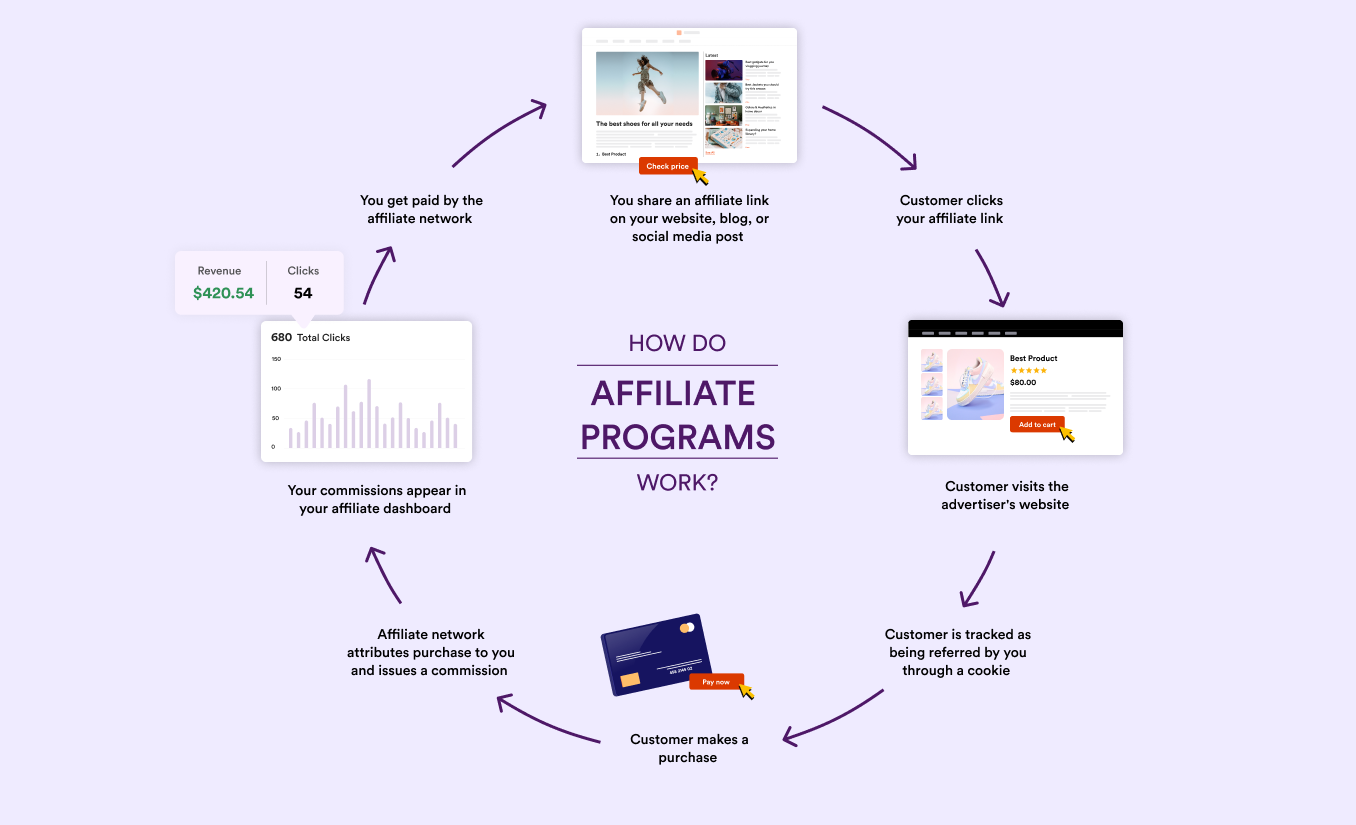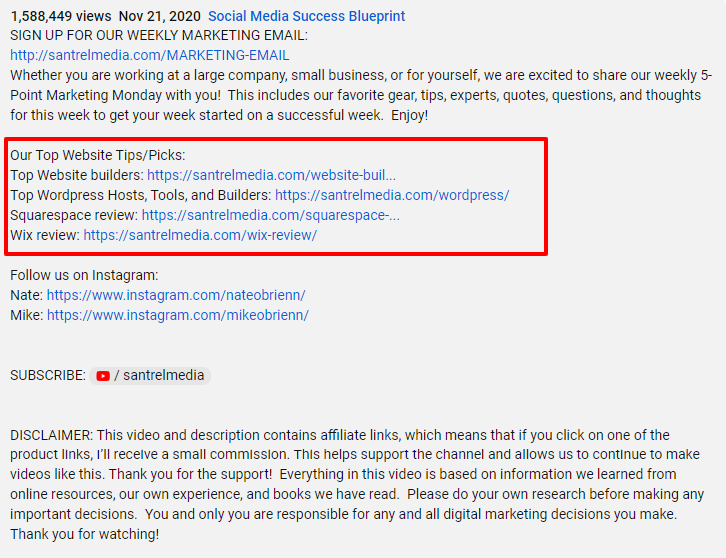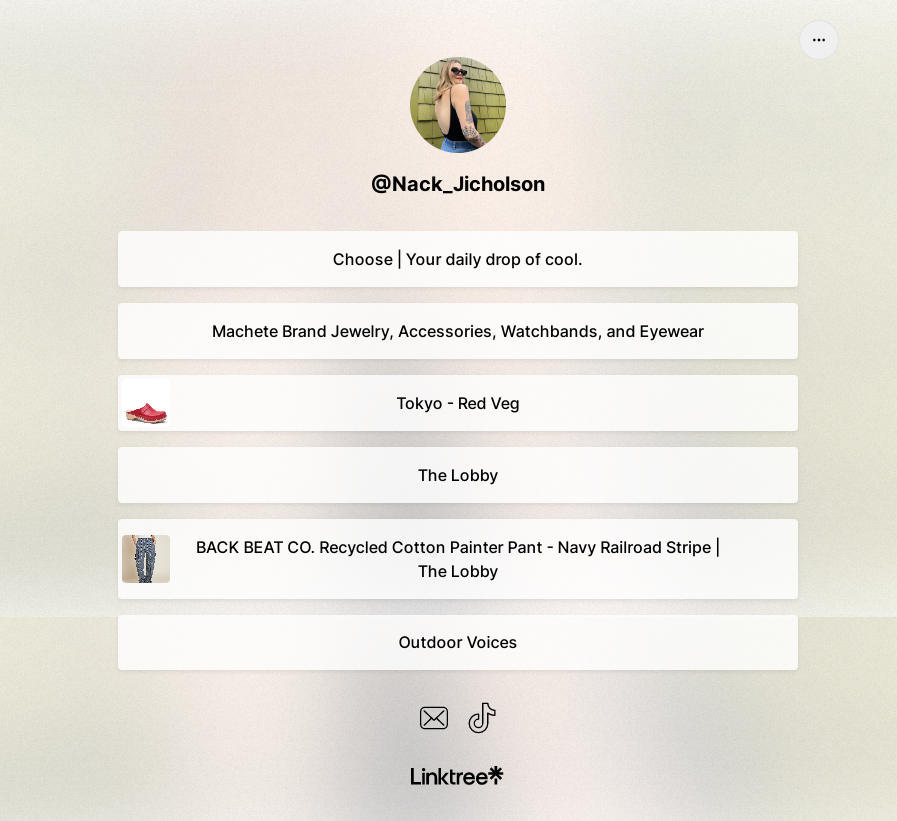Most Strategic Ways To Promote Your Affiliate Links
How do you get your affiliate links clicked? Here's a complete guide that shares some strategic tips to promote your affiliate links.

Have you ever wondered why certain affiliate links generate substantial earnings, while others remain unnoticed in the vast digital landscape? The answer lies not only in the quality of the offer but also in the strategies employed for their promotion.
Promoting affiliate links is a delicate blend of art and science and is not limited to choosing the right affiliate program. It involves presenting these links in a manner that distinguishes them amidst the deluge of online content, resonates with your target audience's objectives, and persuasively communicates the advantages of the products or services you are endorsing.
All of this must be achieved while maintaining an authentic and non-intrusive approach, avoiding any semblance of spamming tactics.
Curious to discover the refined techniques for tastefully promoting affiliate links, ensuring your audience welcomes your efforts? Continue reading to unveil the secrets of success in affiliate marketing.
How do Affiliate Links Work?
Affiliate links serve as specialized referral links provided to you by a brand or company. They serve a crucial purpose in tracking the referrals you generate and compensating you with a commission for successful sales. It's a mutually beneficial arrangement since the company incurs costs only when tangible results are achieved.
Now, let's delve into the inner workings of affiliate links:

Sharing the Link: You disseminate an affiliate link through various channels such as your website, blog, or social media posts.
- Customer Clicks: When a potential customer clicks on your affiliate link.
- Redirection to Advertiser: The customer is redirected to the advertiser's website, where the actual transaction takes place.
- Tracking through Cookies: At this point, a tracking mechanism, usually in the form of cookies, identifies the customer as someone referred by you.
- Purchase is Made: The customer completes a purchase on the advertiser's website.
- Attribution and Commission: An affiliate network acknowledges your role in the referral and calculates the commission owed to you.
- Monitoring in Affiliate Dashboard: You can keep tabs on your commissions through your affiliate dashboard.
- Payment: Finally, you receive your well-deserved payment from the affiliate network.
To the uninitiated, affiliate links might appear as complex pieces of code. However, they are essentially composed of several straightforward components that ensure you receive recognition for your referrals:
Affiliate Tracking Domain: This domain is established by the affiliate network and serves as an intermediary, directing your users to the brand or advertiser's website.
- Affiliate Identifier: This element distinguishes you as the affiliate responsible for the referral.
- Merchant/Advertiser Identifier: It identifies the merchant who is the recipient of the referral.
- SubId: This is customizable text that you can employ to track the performance of different content and links, helping you optimize for conversions.
- Deeplink: You can specify which specific page on the advertiser's website the visitor should land on, rather than the homepage, such as a product page or a targeted landing page.
While each affiliate link may have a unique appearance, they all incorporate these essential elements, granting you the flexibility to utilize them across your website, social media platforms, and email lists. Now, let's explore strategies for effectively promoting affiliate links on your blog or website.
7 Ways to Promote Your Affiliate Links Strategically
Now that you've gained a comprehensive grasp of affiliate link mechanics and have dissected the components that constitute affiliate links, it's time to delve into the most anticipated section of this guide.
We are about to unveil a selection of advanced techniques for promoting your affiliate links, elevating your affiliate marketing endeavors to a whole new level.
1. Embed affiliate links into your blog posts
Incorporating affiliate links into your blog posts stands out as a highly efficient approach for promoting them. This method proves particularly potent when your blog attracts a substantial volume of organic traffic, offering you an extensive platform to present your affiliate links to a diverse audience.
Nonetheless, ensuring that readers actually engage with your affiliate links in your blog articles necessitates a preliminary commitment to regularly publish pertinent and up-to-date content. This practice not only delivers value to your readers by furnishing them with valuable insights on specific subjects but also enables you to naturally showcase your affiliate links without adopting a pushy or overtly sales-oriented demeanor.
Various styles of blog posts can be employed to effectively promote affiliate links, encompassing:
- Product Reviews
- Recommendations
- Product Comparison Articles
- Product Roundup Posts
- "Alternatives To" Articles
For instance, consider "The Every Girl's" exemplary product comparison blog post, which features a selection of affiliate product links. It is noteworthy to observe the inclusion of an affiliate link disclosure right after the headline, an ethical gesture informing readers about the presence of affiliate links within the blog post.

In addition, it is of paramount importance to maintain the integrity and objectivity of your blog content. You have painstakingly cultivated trust with your audience, who rely on your recommendations. Thus, safeguarding this trust entails refraining from endorsing products you do not genuinely endorse or believe in.
2. Include affiliate links in emails and newsletter
An effective strategy for promoting your affiliate offerings involves the integration of affiliate links within your email correspondence and newsletters.
Commencing this endeavor necessitates the establishment of an email list tailored for affiliate marketing purposes. To initiate this process, you can gather email addresses from visitors to your website by enticing them with a valuable lead magnet, such as an ebook or guide.
Once you have cultivated a roster of subscribers, you can craft a series of emails that actively endorse pertinent products or services, seamlessly weaving affiliate links into the messaging.
Email marketing offers two primary avenues for promoting your affiliate links. First, you can dedicate entire emails to the explicit promotion of specific products. Alternatively, you can organically insert affiliate links within the high-quality content you deliver to your email list. For instance, these links could feature within educational emails focused on specific subjects, surfacing as relevant recommendations when discussing particular products.
Furthermore, a roundup email encompassing the finest deals provides an opportunity to incorporate multiple affiliate links. A compelling example of this approach can be found in Wirecutter's email practices.

It is noteworthy to mention that certain affiliate networks, as well as some email marketing services, impose restrictions on the inclusion of affiliate links in emails. Therefore, it is prudent to refrain from inundating your initial email communications with affiliate links. Instead, consider establishing a welcoming email sequence that aids in nurturing trust with your audience before introducing your affiliate links.
3. Harness the Power of Paid Advertising

Leveraging paid advertising represents yet another potent avenue for the promotion of affiliate links, offering the advantage of precise audience targeting. This strategic approach assists you in reaching individuals with a heightened likelihood of making purchases.
However, it is essential to acknowledge the inherent drawback—investment costs associated with acquiring leads. This expenditure may impact your profit margins significantly. Hence, it is imperative to conduct a thorough cost-benefit analysis to determine the viability of employing paid advertising.
Among the various platforms available, Google Ads emerges as a prominent choice for the promotion of affiliate links. This platform permits the creation of ads that can appear in Google search results or on other websites across the internet.
To optimize the effectiveness of your affiliate link promotion through Google Ads, it is vital to generate ads that align closely with the products or services being promoted. A compelling example of an affiliate website utilizing Google search ads can provide valuable insights into this strategy.
Additionally, you can implement retargeting ads, targeting users who have previously displayed interest in your content or products by visiting your website. Through tracking pixels, you can retarget these website visitors with ads on social media platforms or other websites, enticing them to click on your affiliate links.
4. Add affiliate links to your YouTube video descriptions
YouTube affiliate marketing has witnessed a surge in popularity in recent years, presenting an excellent opportunity to harness this trend for the promotion of your affiliate links.
The approach to promoting affiliate links through video marketing closely parallels the strategies employed in blogging or email marketing.
For instance, you can produce YouTube videos exclusively dedicated to the product you aim to endorse. As illustrated by Santrel Media, who placed an affiliate link as the very first item in the video description, this approach ensures direct visibility of the affiliate link.

Alternatively, you can opt to create informative videos and seamlessly introduce a pertinent affiliate product within the video content. The pivotal factor here is relevance. To illustrate, in addition to crafting a dedicated Canva review, you might create a video tutorial on designing a logo or crafting a social media post. Within this video, you can mention the Canva tool and include your affiliate link in the video description.
To maximize the efficacy of this strategy, it is essential to verbally reference the affiliate link in your video while ensuring that it is clearly clickable and easily discoverable within the video description. Positioning the link towards the beginning of the description is advisable to prevent it from getting lost amidst other accompanying details.
Must Read: Top 10 YouTube Video Types to Grow Subscribers and Income in 2023
5. Promote links on a podcast or webinar
Podcasts and webinars wield considerable influence in the realm of affiliate marketing, offering a direct and engaging avenue to connect with your target audience. To effectively showcase affiliate links within these platforms, consider incorporating them into the chat sessions and show notes, as well as promoting them during the live broadcast.
For instance, if you run a podcast centered around personal finance, you can seamlessly integrate affiliate links to financial products or services into the podcast notes or even discuss them during the show itself. An ideal approach encompasses both methods, as podcasts are often consumed while multitasking.

In the case of webinars, you have the opportunity to present affiliate links within the chat section or during your presentation, leveraging the hosting platforms' capabilities to display buttons and links.
A noteworthy advantage of promoting affiliate links through webinars is the enduring impact they offer; you can record, archive, and share the session with a broader audience, amplifying the potential for clicks.
6. Share Affiliate Links via Social Media
A potent technique for publicizing affiliate links on social media revolves around crafting captivating posts and incorporating affiliate links into the captions or your bio.
For instance, if you possess expertise in the health and fitness industry, you can create engaging Facebook or Twitter posts featuring a healthy recipe or workout regimen. Within the caption, seamlessly insert affiliate links relevant to the showcased products or services.
Platforms like Instagram and TikTok, where clickable links aren't accommodated within post captions, require an alternative approach. Here, you can place the affiliate link in your bio or employ personalized discount codes. Alternatively, platforms like Linktree enable you to compile all your affiliate links in one accessible location.

Incorporating Instagram stories can be achieved using the link sticker, and you can save these posts in highlights for easy access by your social media followers.
However, it's crucial to select the right social platform for promoting affiliate links, as different platforms cater to diverse audiences and content styles. Align your choice with your brand and the products you're endorsing. For instance, if you're affiliated with a lifestyle program or promote fashion items, Instagram may prove a more suitable fit than LinkedIn.
Lastly, authenticity remains paramount. Striking a balance is essential; avoid appearing overly sales-oriented. Your audience can discern when you're solely pushing products, so supplement your promotions with personal experiences and explanations of the value you perceive in the products you endorse. This enhances the relevance and credibility of your affiliate links.
Must Reads For Social Media Influencers:
- How to become an Instagram influencer
- How to sell on Instagram
- How to add a link to your TikTok bio
- How to make money on Twitter
7. Advocate for Your Affiliate Site on Online Forums
Advocating for your affiliate sites within forums like Quora and Reddit provides a valuable avenue to connect with your intended audience and channel traffic towards the products or services you're promoting.
Quora, in particular, holds a strong presence in search engine rankings, making quality content likely to achieve high visibility in search results. This can significantly enhance your post's reach and, consequently, drive traffic to your affiliate website.
However, it's imperative to bear in mind that certain forums or specific online communities within these platforms enforce stringent policies against the promotion of affiliate links, potentially resulting in the removal of posts. Prior to posting, it is essential to thoroughly review the forum's guidelines.
In cases where affiliate links are prohibited, your primary objective should be to advance your affiliate site by furnishing valuable information and fostering trust within the forum community. From there, readers can access the affiliate links from your site. To effectively implement this strategy, concentrate on responding to questions related to the products or services you're endorsing, sharing pertinent articles, and offering valuable insights and advice.
Conclusion
Harnessing the potential of affiliate links represents a promising avenue to monetize your online presence. This guide has illuminated eight potent strategies to drive engagement with your affiliate links. From seamlessly integrating them into blog posts, newsletters, online courses, and social media platforms to leveraging social forums, video descriptions, and paid advertising,
Success in any of these strategies hinges on the selection of relevant products, the delivery of valuable content, and the establishment of transparent affiliate relationships. Above all, it is paramount to keep in mind that your primary objective remains the provision of value to your audience. This commitment fosters trust, ultimately translating into robust affiliate commissions.
Lastly, embrace experimentation and continuous optimization of your approaches over time. This dynamic approach aids in identifying the most lucrative techniques and enhancing your overall affiliate revenue.
So, what are you waiting for? Take the plunge and commence your affiliate link promotion journey with the confidence and finesse of a seasoned professional.



